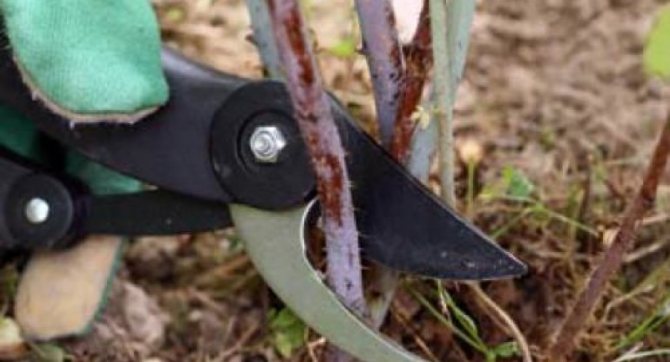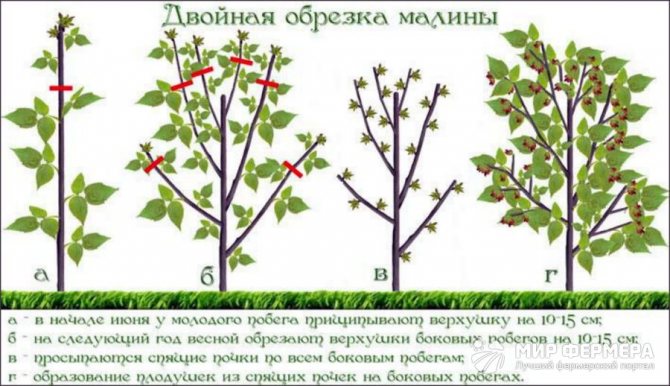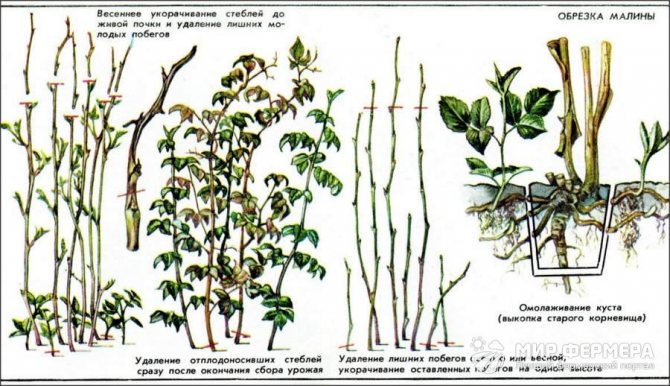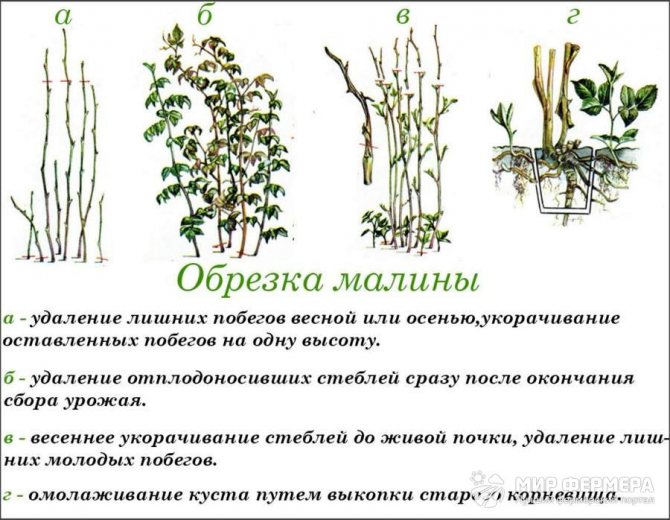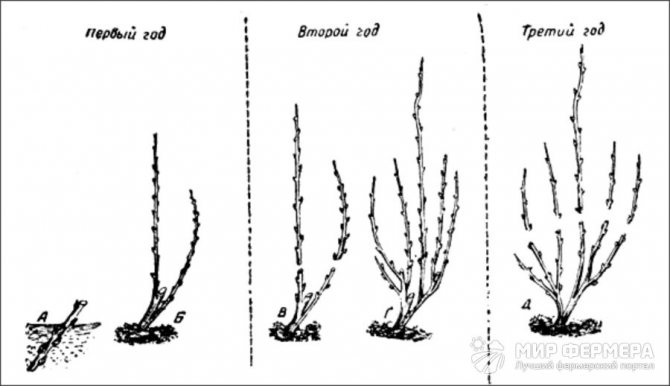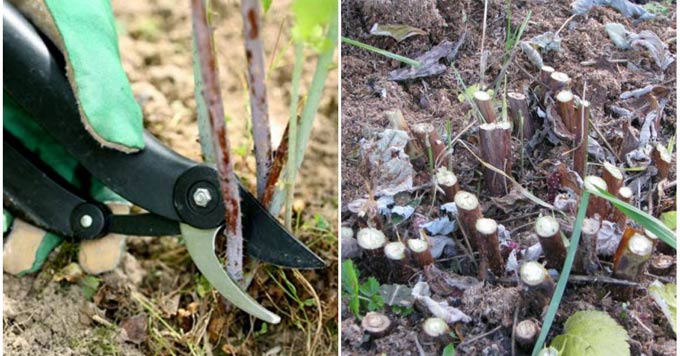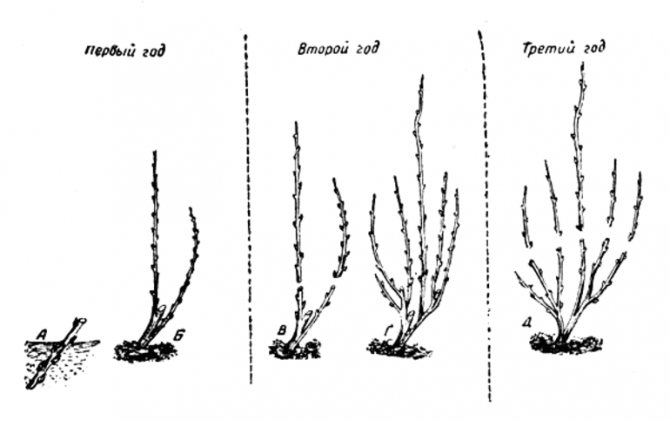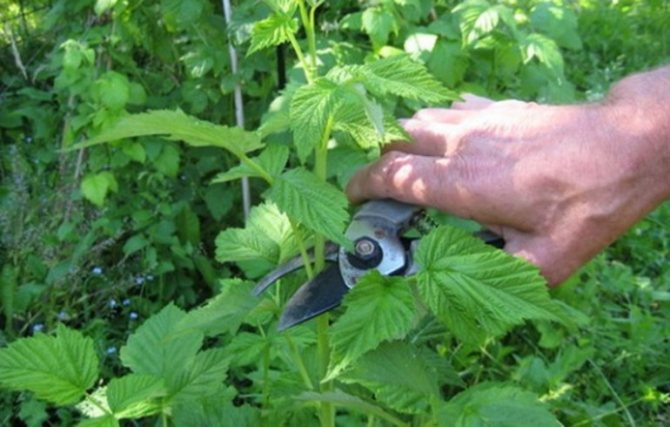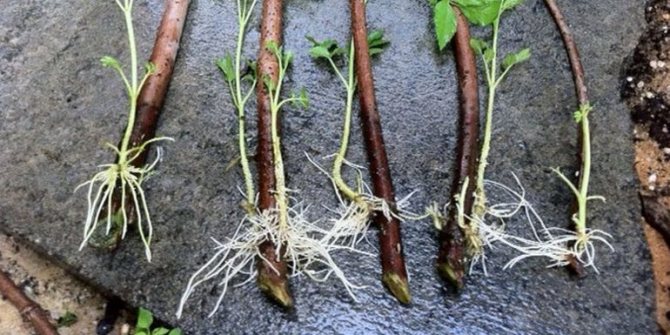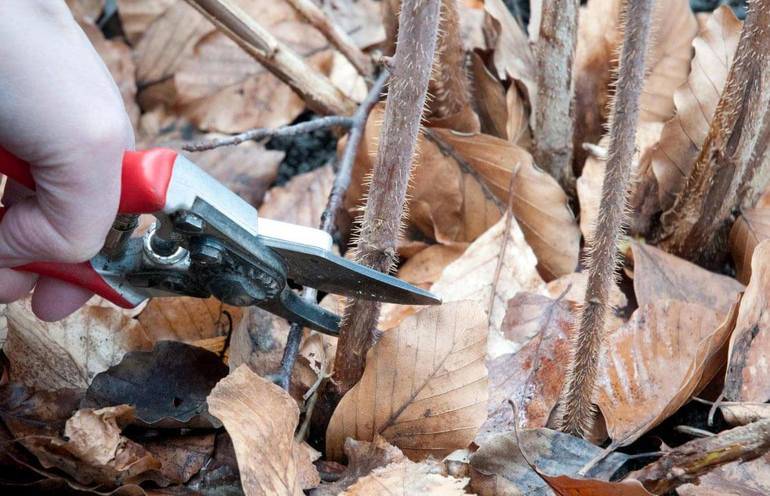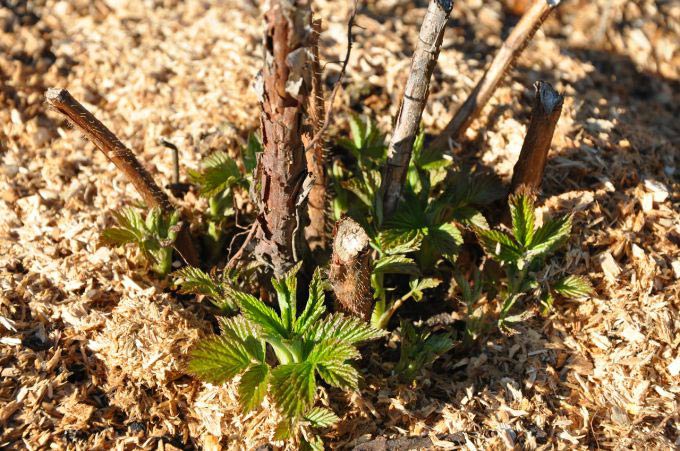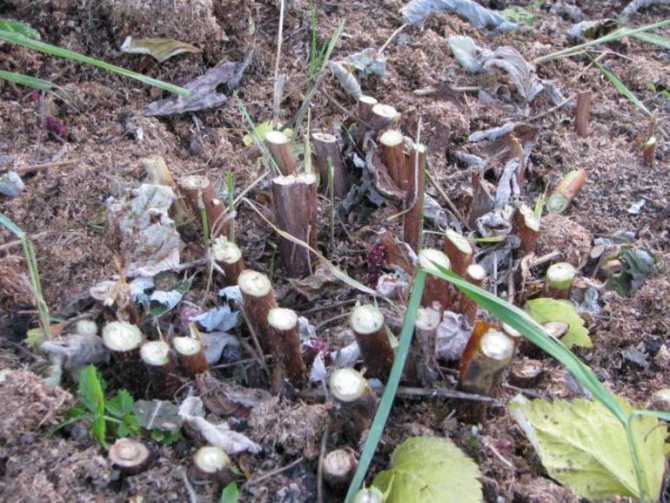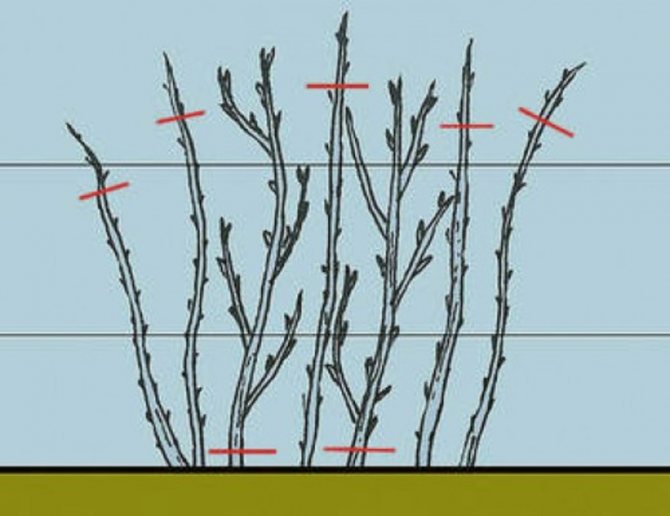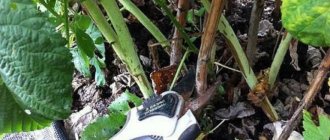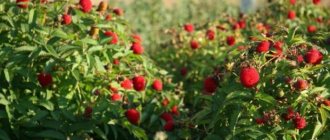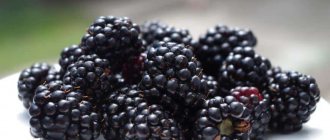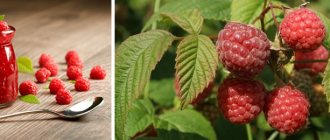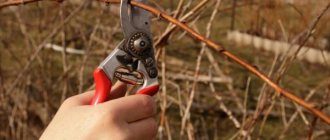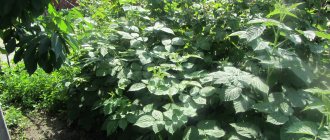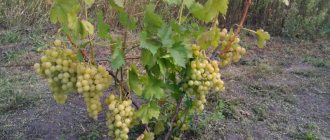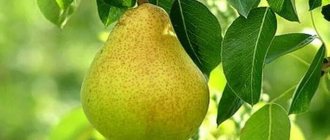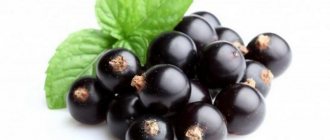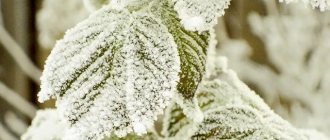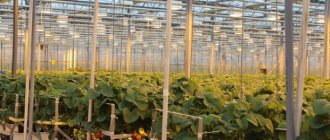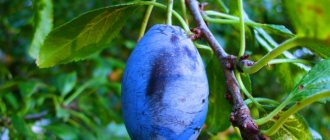»Gardening» Raspberry »Caring for remontant raspberries - autumn events
0
52
Article rating
Proper care of remontant raspberries in the fall becomes the key to maintaining the health of the bushes in the winter, quick awakening in spring and abundant fruiting throughout the next season.
Remontant Raspberry Care - Autumn Activities
Why prune raspberries in the spring?
Raspberry is a perennial shrub that is renewed annually with the growth of new shoots. If you do not control this growth, then after a few years you can get impassable thickets of shoots of various sizes, a large number of dry broken branches and a small number of small berries.
In the spring, buds on last year's branches will begin to awaken, and young shoots will also stretch towards the sun. Gardeners grow raspberries not for the sake of the bush, but for the sake of the harvest, therefore, controlling the quantity and quality of shoots on the bush by pruning, the following goals are pursued:
- when trimming the tops, the growth of lateral branches is stimulated, on which the main part of the fruit brushes is formed;
- rejection of dry, fertile, damaged branches contributes to the formation of new basal buds, from which the growth of young shoots will go;
- when pruning old branches affected by diseases or pests, shrubs get rid of foci of infection;
- cutting out all unnecessary branches, as well as young growth, the bushes in the summer will be well ventilated, illuminated, warmed up, which will reduce the likelihood of their being affected by fungal diseases, will lead to faster and better ripening of fruits;
- the 5-6 strongest and strongest shoots remaining after pruning at the bush will give more yield than an uncut bush with many medium, small, weak branches.
How to get large berries?
This method has become more widespread and is popular with experienced gardeners. The bushes are completely pruned in the fall, after fruiting. Plantings of remontant raspberries hibernate practically without an aerial part.
New shoots will grow in the spring. These annual branches will grow and mature during the growing season. They will have time to bloom and will delight you with a high yield of tasty and large berries.
This cultivation has other benefits as well.
- There are fewer pathogens on one-year-old shoots, because with complete pruning, they do not have the opportunity to overwinter on the bushes.
- The activity of most pests coincides with the ripening period of ordinary raspberries, and such a crop will be formed later, so the berries are less damaged by various parasites.
- The method is ideal for beginner gardeners: there is no need to choose which branches to leave for the winter.
For a one-year growing cycle, any raspberry varieties are suitable, including late-ripening ones, the harvest of which begins to ripen in August or September. For example, Morning Dew, Erica, and Heritage.
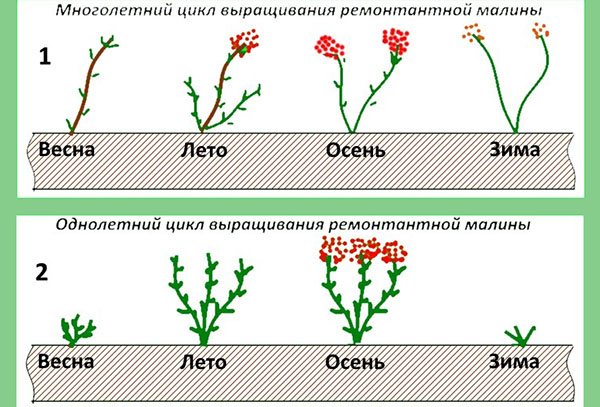
Spring pruning height
In the spring, when buds begin to awaken, the tops of the stems tend to remain dry. There, the kidneys are either frozen out over the winter or immature. All tops must be trimmed with pruning shears to the first green bud, no matter at what height this bud will be the first.If the variety is tall and the raspberry has remained uncut since last year, then it must be shortened to the top of the trellis. On some shoots in the fall, late unpicked berries may remain, which must also be removed.
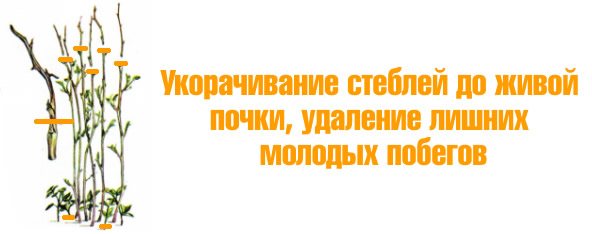

Treatments for pests and diseases
Caring for remontant raspberries in the fall also involves treatments against pests and pathogens that hide in vegetative frequent shrubs, maintaining their vital activity throughout the winter, and in the spring, when warm, they are activated.
After harvesting the berries, the bush is sprayed with fungicides.
Commonly used ones include:
- Fufanon - 1.5 liters for each plant;
- Actellik - 1.5 liters per 10 m².
When activated near moss and lichen shrubs, the soil is treated with iron sulfate.
To prevent the raspberry bush from becoming an object of attack by rodents, gardeners wrap the trunks and the lower tier of branches with burlap, and they install metal mesh fences around the raspberries.
How many shoots to leave when pruning
A large bush requires a lot of nutrients and moisture - this depletes the soil, as a result, the quantity and quality of the ovary decreases, the fruits become smaller, the taste of raspberries also decreases. A large number of shoots oppresses the root system, as a result - it ceases to give young shoots and the bush may die. Therefore, the most optimal number of shoots in one raspberry bush is 5-6 pcs.
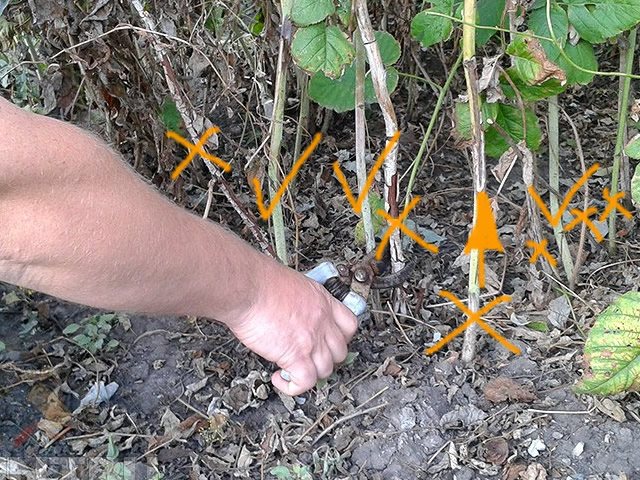

Preparing for winter
Before the onset of cold weather, the raspberry bush is tied up and covered, protecting it from frost.
Tying bushes
Bending and tying branches begins when there is no foliage left on the bush. In this case, the garter should be completed by the time the first autumn frosts are approaching.
Failure to comply with these terms can adversely affect the state of the shoots when they bend with subsequent freezing.
Some gardeners prefer to collect branches in a bunch, however, as practice shows, such preparation for winter rarely ends with success.
The best way to protect the bush from frost is to bend and tie at the same time. The optimal tilt distance is up to 0.5 m. In this case, all shoots should go in the same direction, they are fixed with a wire (additionally, they use arcs and pegs).
Shelter for the winter
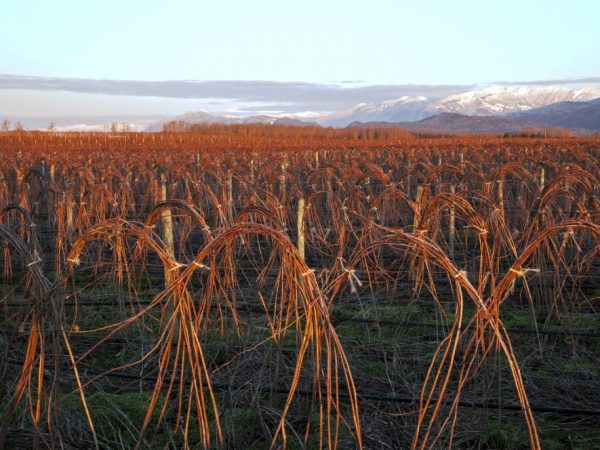

It is necessary to bend the whole bush in one direction
Most varieties of remontant raspberries need shelter for the winter - they do this immediately after pruning. The covering material can be snow cover and leaf litter mixed with coniferous spruce branches, the layer of which should exceed 0.2-0.3 m.
The Yellow Giant variety copes with the winter temperature drop without additional insulation.
When planting and growing fruit and berry crops in the open field in northern areas, where severe frosts are often observed, they resort to polystyrene, roofing material, cardboard, geotextile and film shelter.
The main condition for nonwoven covering materials is air permeability, therefore, in dense artificial coatings, it is required to make holes for oxygen to enter.
Moisture retention
To retain moisture, a supporting structure is created so that the precipitation that falls upon the onset of heat gives the shrub as much useful melt water as possible.
Snow retention also acts as an additional measure to protect raspberries from frost. For these purposes, a trellis is placed from the leeward direction, shields are installed and, with the beginning of an active snowfall, snow is thrown.
Mulch also retains moisture well in the soil. Straw and cut grass, laid out in a layer of about 5-7 cm around the bush, will additionally warm the roots in winter.
You should not mulch raspberries with sawdust, becausethis is a favorable environment for the development of fungi, and in the process of debate they release a fairly large amount of nitrogen, which is not particularly useful for the plant in winter.
Step-by-step instructions for spring pruning raspberries for beginners:
- pruning begins from the moment the buds swell or open, so that they can be distinguished from dry, non-viable ones;
- cut dry, diseased, thin stems at the root. How to distinguish them: dry shoots will be gray or black, they are branched, they break easily with a crunch, diseased branches will have growths, seals, cracks. You need to leave only flexible shoots, at least 1 cm thick at the base in diameter, bright brown;
- dry frozen tops or tops with old berries are cut to the first healthy bud; the leaves remaining from the last season are carefully plucked from the branches, and they are also collected from under the bushes;
- cut branches and old leaves are taken out of the territory of the raspberry tree and must be burned.
Tips for the care of trimmed raspberries
Below are recommendations for caring for raspberries after pruning. You need to know how to introduce top dressing, disinfect the shoots and tie the raspberries to the trellis. All this will help to get a richer harvest.
The gardener in his video talks about caring for raspberries after pruning:
Introduction of dressings
March is best suited for the first top dressing. Depending on the composition and condition of the soil, gardeners use various fertilizers.
If the soil is relatively balanced, then any universal complex fertilizer is suitable as the first top dressing. The situation is different in problem areas. For example, if the leaves of a raspberry turn yellow, then the soil on which it grows lacks nitrogen. Then saltpeter diluted in water is additionally introduced.
The next crucial period in which it is worth paying special attention to the condition of the plants is the period of flowering and fruit set. At this time, the second feeding is carried out, its purpose is to strengthen the shrub at the time of the formation of the ovary. A mixture of potassium sulfate and superphosphate in certain proportions is perfect.
Gardeners carry out the last, third top dressing in the fall, after cutting off the shoots. For its implementation, you will need the same fertilizers as with the second feeding, only in smaller quantities.
Do not forget about organic fertilizers, without which not a single variety of raspberries can do without. However, like any other fruiting shrubs. Fertilize the soil with organic matter very carefully.
This is done no more than 1-2 times every 3 years. Any manure that the gardener has will do.
Shoot disinfection
As soon as the first buds on raspberries begin to wake up, it should be treated against numerous insects and diseases.
Bordeaux liquid is a panacea in the fight against these scourges. At the very beginning of spring, plants are necessarily sprayed with a 1% solution. To avoid contamination from neighboring plantations, they are also treated with raspberry bushes.
Spraying is repeated a little later, when the buds finally wake up. At the time of active flowering and fruit formation, the raspberry tree is carefully examined, the affected parts, if any, are removed.
So that the insect larvae do not remain on the plants and do not go into the soil for the winter period, in the fall, after the last harvest, a final treatment with Bordeaux liquid should be carried out.
Is pruning done in summer?
In young shoots in the summer, pinch the upper part so that they branch out before autumn. The more side shoots there are on them, the more these shoots will give ovaries for the next season. Also in the summer, the branches of early raspberries are cut out. This pruning will stimulate root growth. By the fall, the roots will grow, for the next season such a bush will give more new shoots.With intensive growth, the shoots in the summer are cut out in order to prevent thickening of the bush and the spread of offspring.
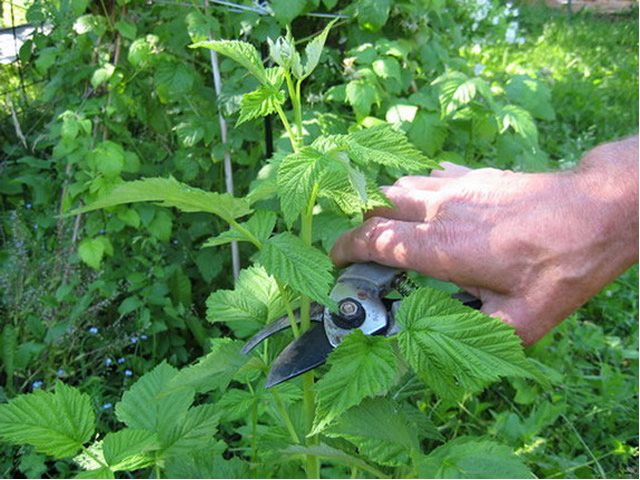

Pruning single-crop varieties
The processing of varieties that allow you to get only one harvest is recommended to be carried out according to the following algorithm:
- With a garden pruner, it is necessary to cut off dry, sluggish and diseased branches located at the base of the bush.
- Do not abruptly pull out, dig up shoots, this can lead to the destruction of the root structure.
- Frozen branches are cut to the first living bud. In this case, the shoot should not be shortened by more than 22-25 cm.
- We remove one-year-old shoots so that no more than five of them remain on one bush.
- If the bush is grown in a trellis method, then 10-15 cm of free space must be left between the branches.
- The remaining shoots are shortened so that their length is 1.2–1.5 m.
If you shorten the shoots too much, this will increase the number of berries, but reduce the yield.
There is a scheme, when using which the berry grower will be able to bear fruit much longer, the procedure is as follows:
- First, you need to divide the branches into four groups.
- We shorten the shoots of the first group by 10-15 cm.
- The second part is shortened by 20-30 cm.
- The branches of the third group are reduced by half.
- The last group is shortened to about 3 cm from the surface of the earth.
Raspberry pruning rules
There is a set of rules and recommendations for caring for berry bushes, the observance of which will ensure the maximum yield in the season:
- Pruning is performed from March to April, when the first buds swell.
- It is necessary to carry out the procedure when the last snow melts so that the soil does not dry out and does not have time to warm up strongly from the sun.
- We cut off the blackened, dry shoots, as well as branches that bear fruit for 2 years.
- In order to create optimal conditions for the amount of light, heat, oxygen and carbon dioxide for the raspberry tree, you need to observe the rate of no more than 30 branches per square meter of soil.
- A special pruner is best suited for pruning, which cannot accidentally damage healthy shoots.
- After shortening, the stems should be tied to supports. Shoots that are not yet bearing fruit do not need to be tied.
- The shoots around the raspberry tree should be cut and removed to ensure that the plant has sufficient nutrition for normal growth and development.
- After removing excess shoots, you need to decontaminate the soil and apply fertilizers to reduce plant stress.
What is double cropping?
This method was developed by the Russian gardener A.G. Sobolev.
It takes place in two steps.
- The first pruning is done in late May or early July. Later it is impossible, because the young branches that appeared due to the procedure will not be able to survive the winter. When new shoots reach from 75 to 100 cm, it is worth pruning the top by 10–20 cm. The purpose of the first pruning is to increase the number of lateral shoots.
- The second stage comes in the spring of next year. With the appearance of the first leaves, you need to remove the tops of the lateral shoots by 5-15 cm.
Double pruning will allow raspberries to become more productive and acquire remontant properties.
But there are also disadvantages. With this method of pruning, airing of the plants can be reduced, as well as increased darkening. To avoid these negative consequences, it is necessary to place the bushes during planting, observing the distance between them at least two meters. Each bush should not have more than 10 shoots.
Features of spring pruning remontant raspberries
If you haven't cut out the entire bush at the root since the fall, but left the unfruitful shoots, then this season you will get two harvests - on the shoots that overwintered and on those that will grow. Spring pruning of overwintered shoots of remontant raspberries is reduced to the removal of dead, damaged, diseased branches.You only need to leave 3-4 strong shoots, because the bush should have strength for the growth and fruiting of a new summer growth. It is important to remember that in remontant raspberries, the tops on new branches are not pinched, as this will inhibit the ovary and the maturation of the autumn harvest.
General care rules
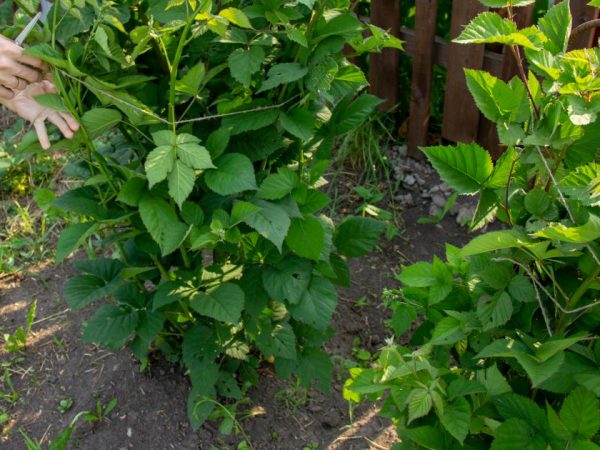

Good care will ensure a rich harvest
Repaired raspberries are cultivated in two ways.
1. One-year option. Fruiting occurs once a year, but abundantly.
2. Two-year method. In the summer, the shoots of the last year are formed, and in the fall, it is the turn of new distillations of the current season, so the autumn harvest is often much larger than the summer one.
Important: in addition to the main return of berries on the bushes, at least a handful of fragrant fruits almost always sing, which is very popular with children who hunt for a ripe delicacy until autumn.
Watering
During the season, the soil generously gives the plants moisture. It is difficult to get a good harvest only in the rains.
The willful climate can both pamper with excellent conditions and upset with a prolonged drought. It is more convenient to establish a comfortable irrigation regime, adjusting it to the prevailing weather.
Autumn watering is reduced by 2-3 times compared to the summer months. It is not worth stopping the water supply at all, it is necessary that the shoots gain moisture before frost.
In the southern regions, it is necessary to ensure that the excessive amount of water does not awaken new buds, they will not survive in the winter.
Top dressing
Preference is given to a complex diet with a predominance of potassium and phosphorus.
Nitrogen is left in the spring, it is responsible for the rapid development of green mass, which is completely unnecessary when preparing for winter.
The purpose of the autumn feeding is to maintain the bushes after the return of the crop. Nutrients are also necessary for the establishment of new buds, therefore organic and mineral fertilizers are added.
Humus is used as organic matter, manure is sometimes added. Consumption: 1 bucket per large, powerful bush. The bookmark is carried out after pruning, the layer will protect the roots from freezing, creating a kind of warm pillow through which air penetrates, but frost cannot damage.
Attention! Fresh styling is not recommended - it burns fine root hairs.
Superphosphate, potassium salt, complex feeding on their basis are used as mineral additives. Application rate: 1 tsp per bush.
Attention! On sandy soils, the amount of fertilizer doubles.
Features of spring pruning of standard raspberries
Spring pruning of tree raspberries includes sanitary pruning, which is standard for any variety, and pruning to form the crown. To give the bush the shape of a tree, 2-3 branches are left in it in the spring. When they grow just over a meter, their tops are cut off by 10-12 centimeters. The upward growth of the stem stops, and the lateral branches begin to grow actively. Until the middle or end of May, they will stretch to 50-70 cm. They also need to be shortened to 35-40 cm. From this, the side branches will also begin to branch. Thus, the bush forms 2-3 stem shoots with a lush branched crown. The more branchy it is, the more fruit brushes there will be on the bush next year.
When to trim? Month selection and timing
If winters are predominantly frosty and snowless, then spring pruning is carried out in March.
Autumn pruning is also not worth delaying. It is best to spend it in August-September. This procedure will help in the formation of replacement shoots and improve the illumination inside the shrub, which will contribute to greater resistance to diseases and pests.
The most important thing is to do the pruning 3 weeks before freezing temperatures.
Is pruning different in the Krasnodar Territory, Moscow Region, Siberia?
The procedure for pruning raspberry bushes in spring in different climatic zones differs only in terms of timing.
- in the Krasnodar Territory, the earth warms up early after winter, the plants wake up there from mid-March.Therefore, spring work, in particular pruning, should be started as soon as the buds are swollen. The optimal time for pruning raspberries is late March or early April. One must not be late with sanitary pruning because there are no severe frosts there in winter, which means that the spores and most of the harmful insects and their larvae did not freeze and from the first warm days this "guard" begins to intensively capture the territory of the raspberry tree. Old, dry branches, leaves, berries, in which the pests could overwinter, must be immediately cut out and burned;
- in the Moscow region, spring pruning of raspberries is carried out in late April or early May. In recent years, the climate in Central Russia has changed somewhat, so you always need to focus on the air temperature and take into account spring frosts;
- in the Urals and Siberia, the pruning period is the end of May, the beginning of July. You need to wait for the beginning of budding. If you start pruning earlier, it will be difficult to determine where the tops are alive and where they are frozen.
Spring pruning is important to do on time. After it, the growth of additional fruit branches is immediately started. If the tops are trimmed late, then the ovary and ripening of the crop will also move away. Because of this, the plant will not have time to rest and prepare for winter, which means that some of the weakened shoots may not withstand winter frosts and temperature changes.
Advantages and Disadvantages of Spring Pruning
If raspberries are not happy with a good harvest, this may be due to improper pruning or lack of it. When this procedure is ignored, the shrub will no longer bear fruit and the shrub itself will go wild. Pruning raspberries in spring has many benefits. Its implementation involves the removal of dry and damaged shoots after winter. If these actions are not carried out, the bush will look wilted and undeveloped. This will also lead to difficulties with care and harvesting. In the case when the culture is tall, it will have to be cut by 2/3 of the total growth.
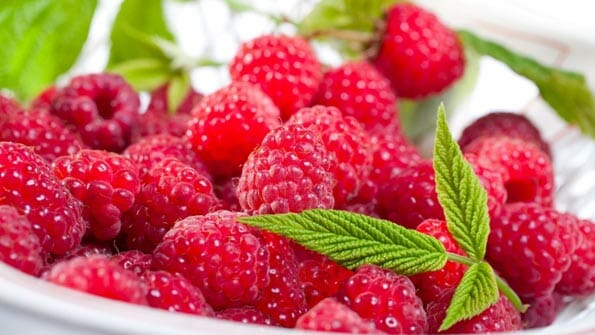

This procedure will lead to active fruiting. This is due to the fact that all fruiting buds are located closer to the beginning of the growth or to the central part. With the onset of spring, active development of basal buds is observed, which release fresh shoots. When it is not needed for reproduction, it must be removed. Young shoots will begin to absorb all the nutrients for their growth, instead of using them to feed the fruit. 56 If wood trunks were not trimmed during the autumn period, it is recommended to postpone the work until the spring. The shoots will interfere with the growth of the young and will lead to thickets in the raspberry bush. Moreover, often on old seedlings, the first signs that the plant is sick become noticeable before anyone else. The disadvantage of spring pruning of the bush is that the timing for the procedure was incorrectly selected. If frost occurs after such work, young shoots may freeze out.



